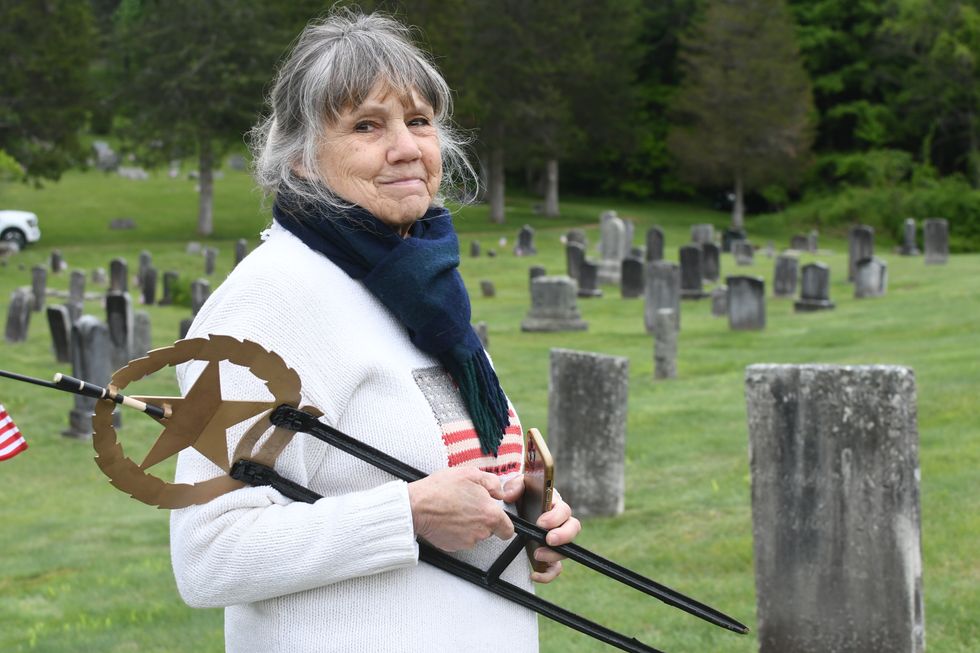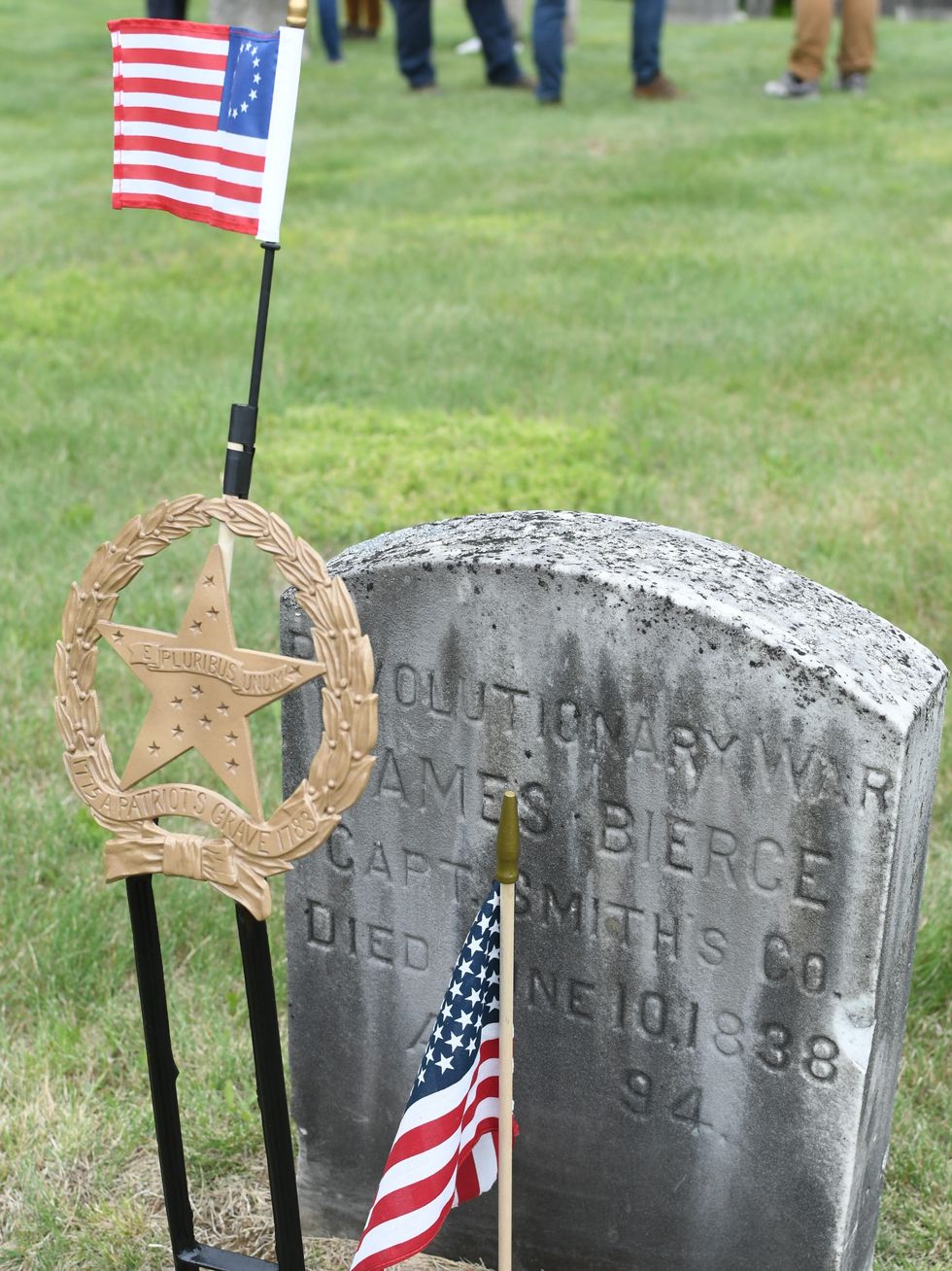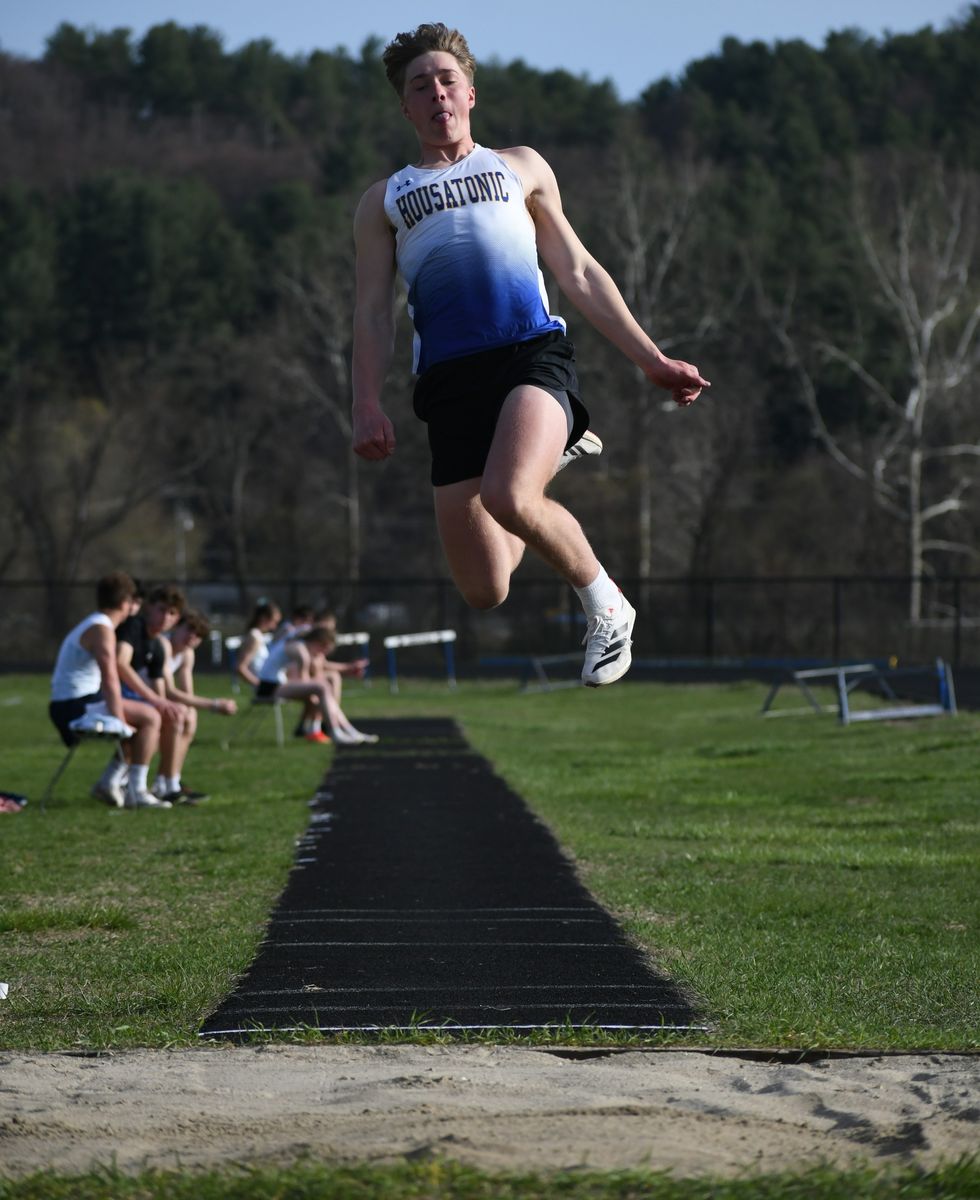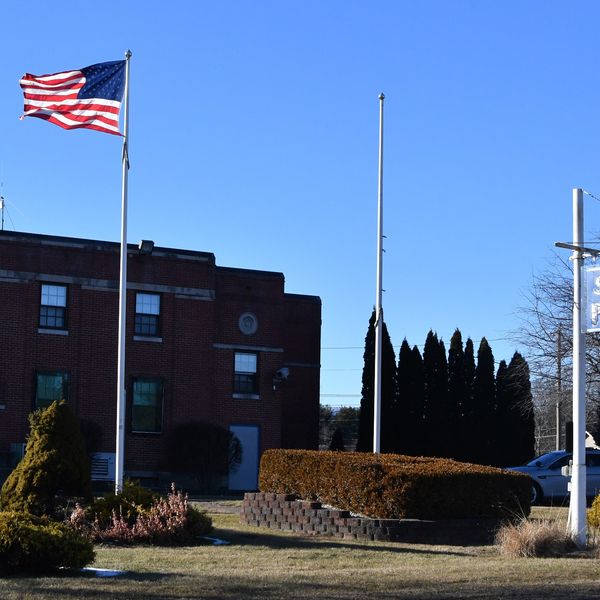Latest News
Bill Dinneen, left, and Ivan Kotchoubey, age 7, place a recently restored grave marker at the headstone of David Mallery, a Revolutionary War veteran, in Cornwall Sunday, May 25.
Photo by Riley Klein
CORNWALL — On Sunday, May 25, Cornwall held a powerful ceremony to honor local veterans of the Revolutionary War.
At the cemetery on Route 4, about 25 attendees gathered to witness the placement of 10 grave markers. Bill Dinneen of the Cornwall Historical Society and Warren Stevens led the ceremony.
“These markers had gone missing from the cemetery, we don’t know when,” Dinneen said, showing six bronze and four cast iron markers that were recently restored and painted.
He explained the markers were found in bushes at the edge of the cemetery by Gene Swanson, of Washington Depot. It was unclear why they were removed from the gravestones, and Dinneen said there could be more elsewhere in the cemetery.

“Today we have 10 markers. We have 32 names” of buried Revolutionary War veterans, Dinneen said. “The bronze markers will go to ranked soldiers,” such as sergeants, and “the cast ones will go to the oldest” of the infantry soldiers.
The restoration process included sandblasting, priming and painting. He was not certain, but Dinneen said the markers may have been originally placed by the government around World War I, at which time the original tombstones were replaced with harder stone.
Stevens explained the symbolism of the markers: A big star in the middle represents one of the colonies, 13 little stars represent all the colonies, the years 1775 and 1783 show the duration of the war, the words “A Patriot’s Grave” and “E Pluribus Unum. From many, there is one,” he said.

Attendees, some of them descendants of the veterans, assisted in the placement of the markers.
Susan Hellmann, of Cornwall, said she would be placing a restored marker at the grave of “my great, great, great grandfather Noah Harrison” who served in the Revolution. “I feel like I’m going to cry. It’s just very touching, very powerful,” she said.
Dinneen read the rank, company and lifespan of each veteran as the markers were being placed, then Stevens fired a blast from his musket. When all the markers were set, the names of the other Revolutionary veterans buried in town were read aloud.

The ceremony was held as part of Memorial Day remembrances in Cornwall. It also marked the first official event in town for the nation’s 250th birthday with more to come.
As the occasion came to an end, a light rain began.

Keep ReadingShow less
Big Blue lax wins Founders League
May 24, 2025
LAKEVILLE — The Hotchkiss School girls lacrosse won the 2025 Founders League championship with an 11-10 victory over Choate Rosemary Hall May 21.
The Bearcats battled back from behind by as many as four points.
MaryHelen McCooey scored the game-winning goal with about two minutes remaining.
The win marked the fourth consecutive Founders League title for Hotchkiss girls lacrosse.
Keep ReadingShow less
The Marvelwood lacrosse team poses for a group photo May 20 after winning the HVAL title for the second year in row.
Photo by Lans Christensen
KENT — On Tuesday, May 20, Marvelwood School lacrosse defeated Woodhall School 15-9 in the Housatonic Valley Athletic League tournament final.
It was second straight HVAL championship win for the Pterodactyls and their fifth league title since 2018.
Marvelwood and Woodhall played twice this past season with Marvelwood winning both games. They met in the championship as the first and second ranked teams in the league.
In the pre-game huddle, Marvelwood Coach Zach Maizel pumped up his players and urged them to “be aggressive early.”

Taking his message to heart, attackman Eli Jamieson scored in the first minute of game play. He scored twice more in the first period, which ended with Marvelwood ahead 6-3.
Woodhall played aggressively and stayed on the attack, but the first half ended 9-4 in favor of Marvelwood.
Jamieson was the key player on the Marvelwood squad, and he scored twice more in the final period to maintain the Pterodactyls’ lead.
Woodhall fought hard and possessed control for most of the final period, scoring five goals but falling to a final 15-9 Marvelwood victory.
Keep ReadingShow less
HVRHS sophomore Ryan Segalla went three-for-three May 17 with Berkshire League gold in the 100m, 200m and 400m races. He was also on the gold-winning 4x400m relay team.
Photo by Riley Klein
Berkshire League track and field wrapped up a season of competition with the league finals in Litchfield May 17. The BL festival followed with decathlon, heptathlon, steeplechase and hammer in Falls Village May 20 and Thomaston May 21.
The events included athletes from Housatonic Valley Regional High School, Gilbert School, Lakeview High School, Nonnewaug High School, Northwestern Regional High School, Shepaug Valley High School, Terryville High School and Thomaston High School.
In the gold medal tally, Nonnewaug led with 12 golds, Housatonic won 10, Northwestern won six, Thomaston won six, Lakeview won five and Shepaug won three.
For Housatonic, Senior Mia Dodge won the girls 300m hurdles.

Sophomore Ryan Segalla won the boys 100m, 200m and 400m races.
Senior Kyle McCarron won the boys 800m and 1600m races.
The boys 4x400m relay team of Anthony Labbadia, Patrick Money, Kyle McCarron and Ryan Segalla won gold.
Junior Anthony Labbadia won the boys triple jump by a margin of more than three feet. He also earned second place in the boys 400m race.
Senior Patrick Money won the decathlon.
Senior Gabi Titone won the steeplechase. Junior Olivia Brooks took bronze.
The girls 4x400m relay team of Mckenzie Lotz, Harper Howe, Mia Dodge and Maddy Johnson took silver. The same team took bronze in the 4x100m relay.
Harper Howe took silver in the girls 400m race.
Gabi Titone took silver in the girls 800m race.
The Connecticut Interscholastic Athletic Conference Class S state track and field meet will be held in New Britain on June 2.

Keep ReadingShow less
loading







